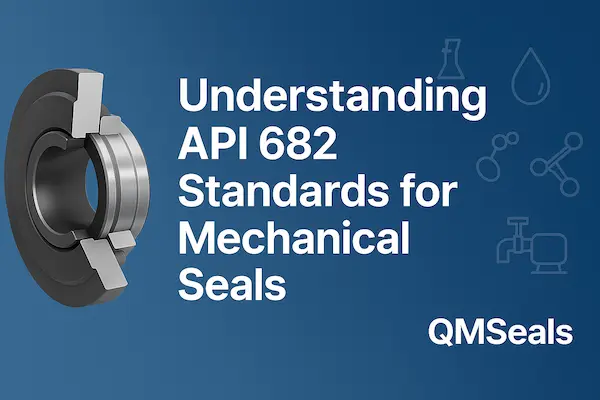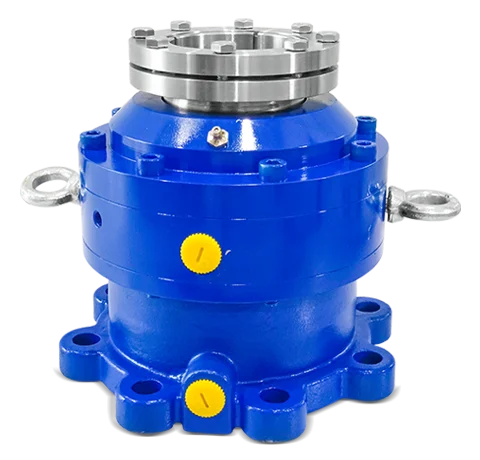Posted At: Sep 10, 2025 - 493 Views

Understanding API 682 Standards for Mechanical Seals
Introduction
In industries like oil, gas, chemical processing, and power generation, mechanical seals are critical for pump reliability and safety. To ensure standardization and optimal performance, the API 682 mechanical seals standard was introduced. Understanding API 682 helps plant engineers, maintenance teams, and seal suppliers select the right seal for high-pressure and critical applications.
This blog explains what API 682 is, the different seal types, arrangements, piping plans, and why compliance is essential for pump performance.
What is API 682?
API 682 is a standard published by the American Petroleum Institute (API) that provides guidelines for mechanical seals used in centrifugal pumps. Its main objectives are:
Ensure reliability and safety in hazardous and high-pressure environments
Standardize seal types, arrangements, and testing across industries
Facilitate interchangeability of mechanical seals between manufacturers
By following API 682, industries reduce the risk of seal failure, leakage, and downtime, ensuring smooth operations.
Types of API 682 Mechanical Seals
API 682 classifies seals based on category, arrangement, and application:
1. Seal Categories
Category 1 → Non-critical applications, moderate temperatures, and pressures
Category 2 → Standard industrial applications with higher reliability
Category 3 → High-risk, critical applications such as petroleum or chemical plants
2. Seal Arrangements
API 682 defines three main arrangements:
Single Seals → One sealing interface, used for less demanding applications
Dual Seals → Two seal faces, can be back-to-back, face-to-face, or tandem arrangement
Pusher vs. Non-Pusher Seals → Determines flexibility and movement of the seal
3. Piping Plans
API 682 provides piping plan recommendations to:
Supply barrier or buffer fluid to dual seals
Cool and lubricate the seal faces
Monitor seal performance for safety
Common piping plans include Plan 11, Plan 32, Plan 53A/B, and Plan 74, each designed for specific applications and fluid types.
Why API 682 Compliance is Important
Enhanced Safety → Prevents leaks of hazardous fluids
Improved Pump Performance → Reduces downtime and maintenance
Global Standardization → Easier replacement and sourcing of seals
Cost Savings → Minimizes failures and operational disruptions
Using API 682 mechanical seals ensures plants operate within safe and reliable parameters, especially in high-risk industries like oil & gas.
How to Choose the Right API 682 Seal
When selecting an API 682 compliant seal, consider:
Application Category → Category 1, 2, or 3
Operating Conditions → Pressure, temperature, and fluid type
Seal Arrangement → Single or dual seal
Piping Plan → Ensure proper lubrication, cooling, and monitoring
Material Selection → Carbon, silicon carbide, tungsten carbide depending on fluid and wear
Consulting an experienced supplier like QMSeals ensures the correct seal selection for maximum reliability.
Conclusion
Understanding API 682 mechanical seals is critical for industries requiring high reliability and safety in pump operations. From seal categories to arrangements and piping plans, compliance ensures optimal performance and long-term durability.
At QMSeals, we provide API 682 compliant mechanical seals tailored to your industry needs. Our experts can guide you in choosing the right seal, arrangement, and materials to maximize efficiency, safety, and operational life.
Frequently Asked Questions
1. What is the main purpose of API 682?
To standardize mechanical seals for centrifugal pumps, ensuring safety, reliability, and interchangeability.
2. Which industries use API 682 mechanical seals?
Oil & gas, chemical processing, petrochemical, power generation, and any industry handling hazardous fluids.
3. What is the difference between single and dual seals?
Single seals have one sealing interface, while dual seals use two faces for enhanced reliability and containment of hazardous fluids.
4. Can I retrofit non-API seals with API 682 seals?
Yes, but careful evaluation is needed to match arrangement, piping plan, and materials.
5. Why is piping plan important in API 682 seals?
It ensures proper lubrication, cooling, and monitoring of seal faces to prevent failure.


